HBO’s instant classic, 'Westworld', gets a huge cinematic look and feel through use of 35mm film by DP Paul Cameron, ASC
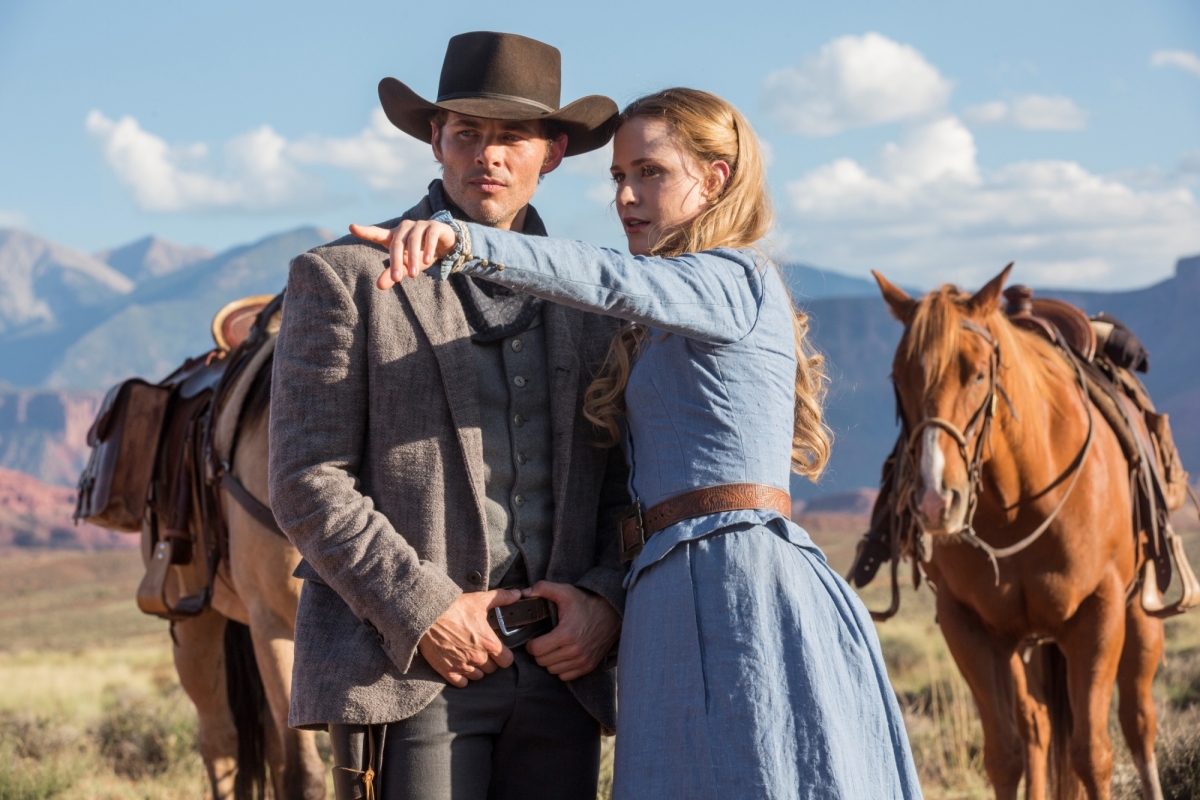
Paul Cameron, ASC shoots HBO’s WESTWORLD. Image courtesy of John P. Johnson/HBO.
If you were under the impression that episodic TV shows shoot video exclusively these days, then think again. Westworld , HBO's hotly-anticipated, 10-episode thriller, directed by Jonathan Nolan, with JJ Abrams amongst the executive producers, was conceived and executed entirely as a celluloid production, harnessing multiple KODAK 35mm film stocks to deliver an experience of impressive scale and lasting visual grandeur.
At the lavish, who's who, Chinese Theatre premiere in Hollywood where there was not an empty seat - audiences were captivated, and the show ended with uproarious applause. The reviews for Nolan's opus were nothing short of spectacular. " Westworld is not the next Game of Thrones --it's much more than that," praised Esquire. "A rare kind of truly transporting television," wrote Vanity Fair, and Time Magazine gushed, "Its carefully chosen details add up to a pulp spectacular that's more thoughtful than any other of this fall's new dramas."
Leave it to HBO, the maker of premium television to find a way to go bigger and reset the bar for premium television. Suffice it to say, everything about Westworld is near perfection and the series greatly separates itself from the rest of the television pack. The story will have viewers coming back week after week. The casting is as good as it gets, and the cinematography pushes the boundaries of fine art to its absolute apex.
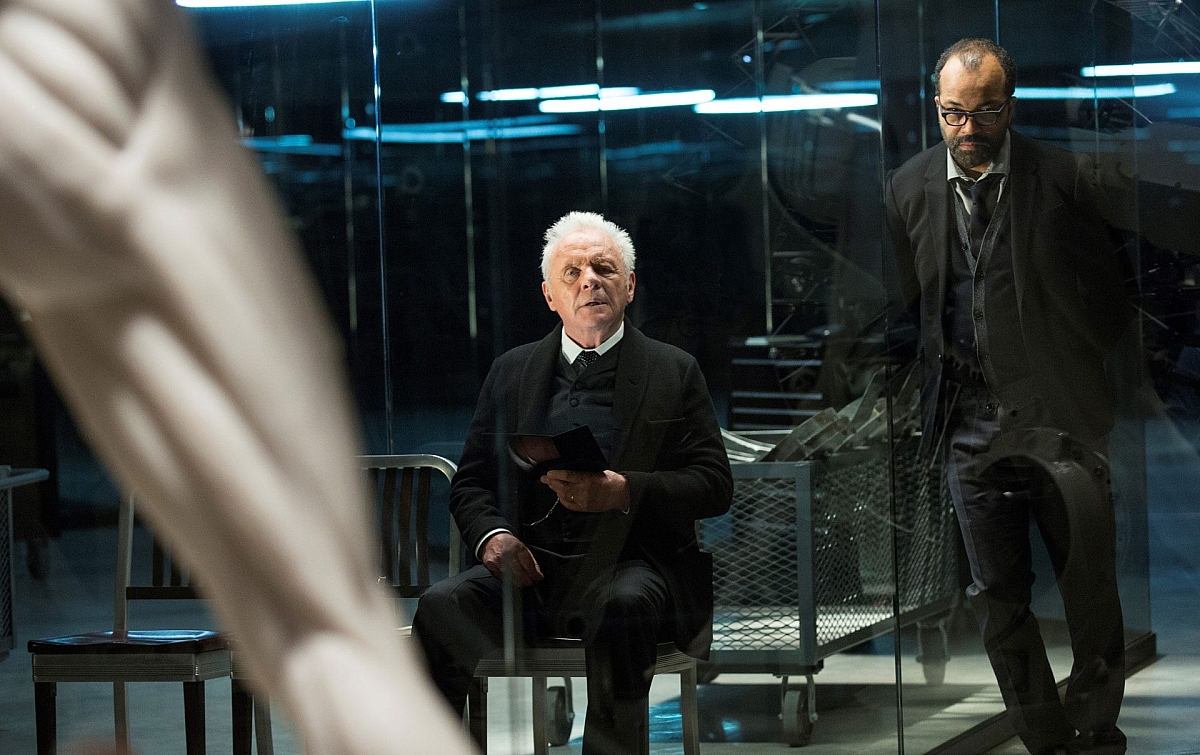
Anthony Hopkins as Dr. Robert Ford in HBO's WESTWORLD. Image courtesy of John P. Johnson/HBO.
It also prompted a clarion call from pilot episode DP Paul Cameron, ASC for cinematographers to re-assume artistic control by shooting on film. And it offers the tantalizing reminder to studios that shooting on film is perfectly cost-effective across all levels of budgets.
HBO's Westworld series takes its premise - about a vast, adult theme park, where the guests are entertained by android hosts - from Michael Crichton's 1973 sci-fi movie of the same name. However, the new serialization expands the storyline, elaborating particularly on the host world and the protagonists who work furtively behind-the-scenes.
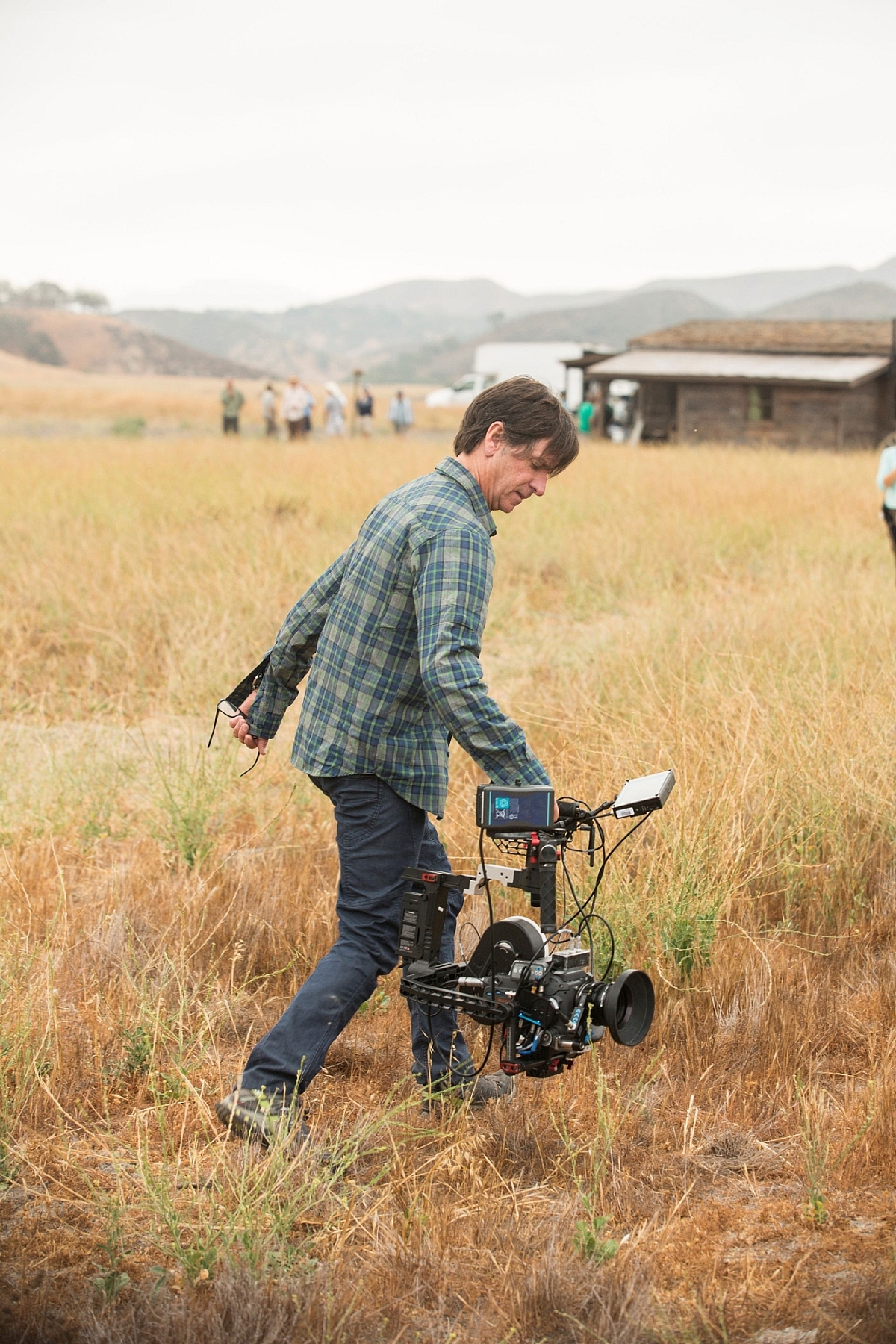
Paul Cameron, ASC shoots HBO's WESTWORLD. Image courtesy of John P. Johnson/HBO.
"It was a big departure to expand an 88-minute movie into a 10-hour series, with more episodes likely in the future, and the expectations were high," remarks Cameron. "This production necessarily needed genuine scale - where the action inhabits different levels of the eerie inner workings of Westworld , as well as the magnificent landscapes and settings of the park itself. Consequently, it needed a big cinematic look, and by far the best way to achieve all of that is by shooting on film. From daytime exteriors to low light interiors, film is elegant, stylish and just fabulous at capturing and holding a look. There was never any discussion; this was a film production from the get-go."
Westworld features the acting talents of Anthony Hopkins, Ed Harris, Evan Rachel Wood, James Marsden, Thandie Newton, Jeffrey Wright, Sidse Babett Knudsen, Ingrid Bolsø Berdal, Luke Hemsworth and Clifton Collins, Jr. Filming for the pilot and subsequent episodes, by series cinematographers Brendan Galvin, Robert McLachlan, David Franco and Jeff Jur, took place at Melody Ranch, Santa Clarita, California where the Western town, railroad and elaborate glass-walled inner-world sets were built under the supervision of Nathan Crowley, and also in the striking landscapes near Moab, in Arches National Park, Utah.
Cameron says creative references included classic John Ford Westerns through to Ridley Scott's futuristic Blade Runner (1982), although he, Nolan and Crowley resisted the temptation to develop too strong of a look for the show, preferring to keep the overall image, "clean, naturalistic and authentic - pretty much true to what was in front of the camera," he says.
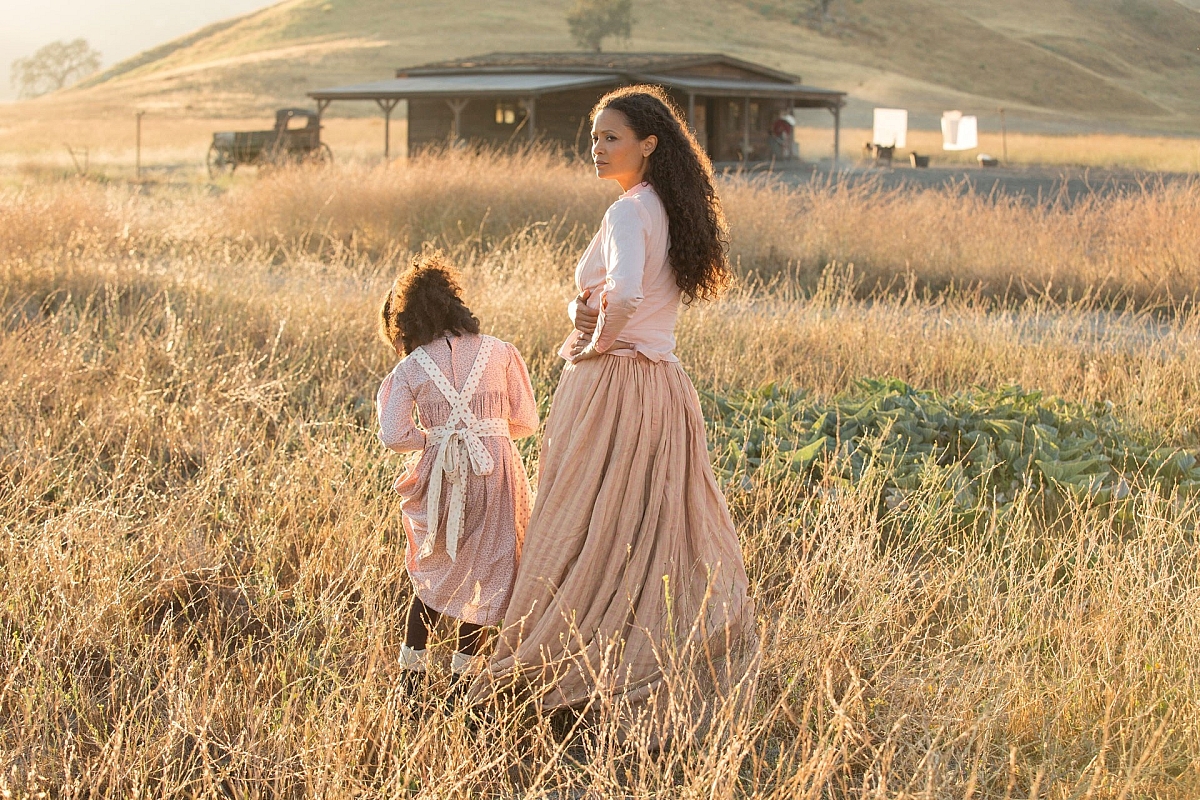
Thandie Newton as Maeve Millay in HBO's WESTWORLD Image courtesy of John P. Johnson/HBO.
The only departure from this approach was the visual treatment of the various dreams, memories and nightmare experiences of the automaton hosts. As Cameron explains, "We shot 16:9, 3-perf, 35mm, with Arricam LT and 235 cameras, using Cooke S-4 Primes and Fujinon Premier zoom lenses for the majority of the production. I breathed a different air, a more nostalgic look, into the android dream sequences by shooting with a set of Canon K35s. These uncoated vintage lenses have particular flaring and halation properties that helped to differentiate the imagery and to bring a spooky sense of their possible consciousness."
Cameron selected KODAK VISION3 5203 50D, 5207 250D and 5219 500T stocks to suit the different locations and scenarios of the production. "My primary stock for the day interiors and exteriors was the slow speed 5203 50D. It has absolutely gorgeous, rich, natural blacks, contrast and colour rendition, plus the latitude to easily cope with the dynamic lighting conditions, such as scenes in which the actors enter the saloon interior from the bright daylight exterior. I utilized the 5219 500T for exterior night scenes and low-light interiors, such as the control room, diagnostics center and many other creepy behind-the-scenes environments. I shot the dusk work on KODAK 5207 250D as it reacts really well in the light of golden hour."
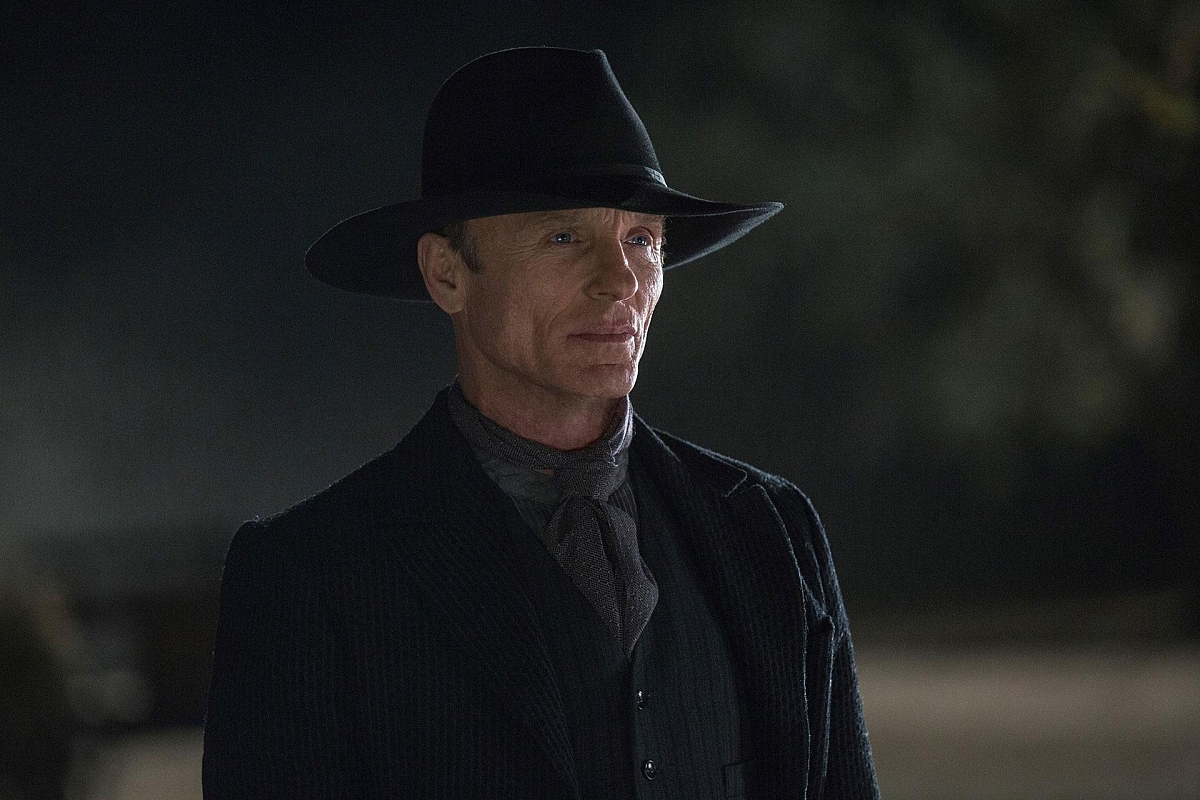
Ed Harris as The Man in Black in HBO's WESTWORLD Image courtesy of John P. Johnson/HBO.
The footage was all rated normally and then developed normally at Fotokem, in LA, under the auspices of dailies and operations manager Mark Van Horne, who Cameron describes as, "one of the greatest champions of film, who makes shooting with film a fabulous experience."
Cameron returned to celluloid after a gap of four years - his last filmed movie was Man On A Ledge (2012) - and performed the color grade on Westworld colorist Shane Harris at Encore/Hollywood.
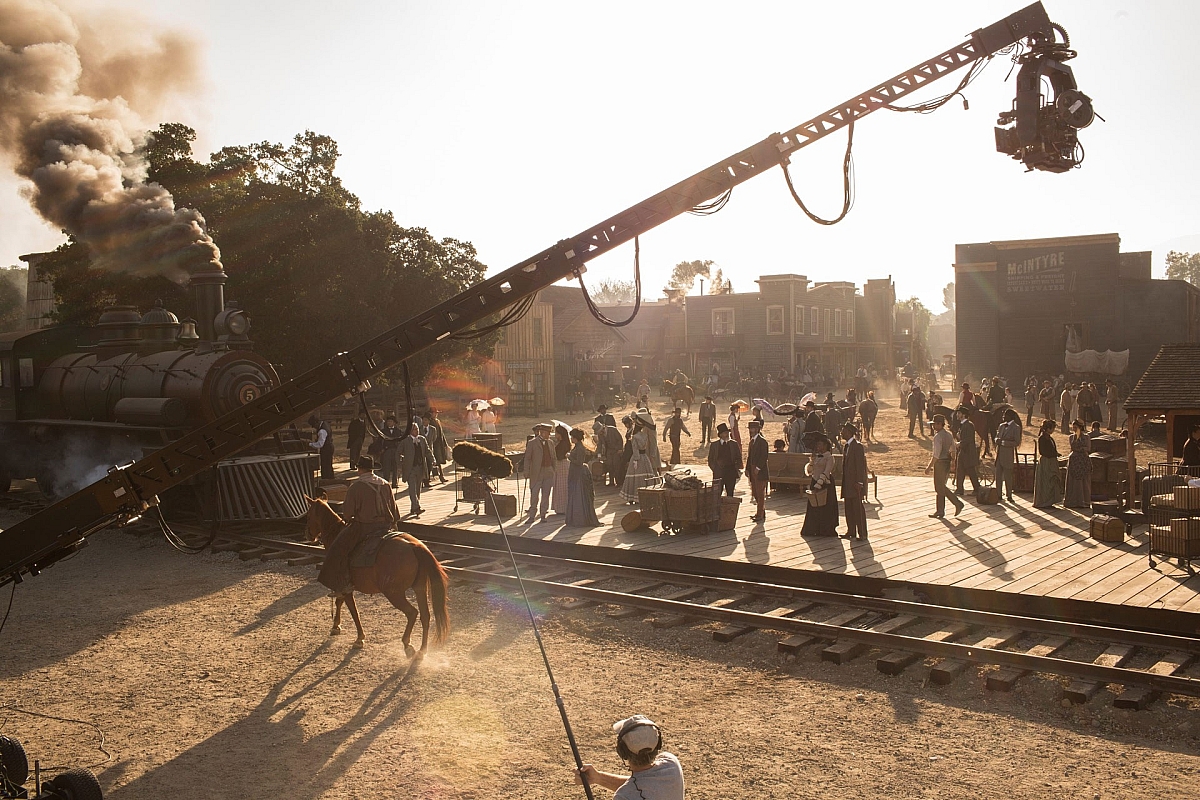
Behind the scenes look at HBO's Westworld. Image courtesy of John P. Johnson/HBO.
"There's no place like home," says Cameron. "Film is an artistic medium with over 100 years of development that is familiar and comfortable. As opposed to the nascent binary image, where you can't be certain how a pixel might appear, when you throw film up onto the screen, you immediately get an engaging picture that your eyes melt into naturally. Film radiates by nature. The textures, nuances and subtleties in the image, not to mention the superior resolution and handling of color space, far surpass the digital image, no question. Plus, shooting film, the responsibility for the image rests with the cinematographer, underlining the importance of our role. If you want to regain control, shoot film."
Looking more broadly, Cameron sees a parallel between the Westworld theme - of a business bounding headlong into commercialized technology before perhaps thinking through the ramifications - and the production industry today.
"I find it shocking that, in a short period of time, manufacturers and vendors have usurped the debate around shooting film versus video, making it about binary resolution and side-lining the greater importance of aesthetic and creative choice. The tail has been wagging the dog," he says. "There's a genuine misconception about the costs of shooting film versus video, and producers and studios might want to seriously relook at that, and discover a pleasant surprise. Film can and should be a primary choice, and luckily we have peer producers and filmmakers who are making the positive choice for film. The vision of Jonathan and the HBO executives to shoot this series on film is only to be applauded. For the proof of the pudding, watch Westworld !"